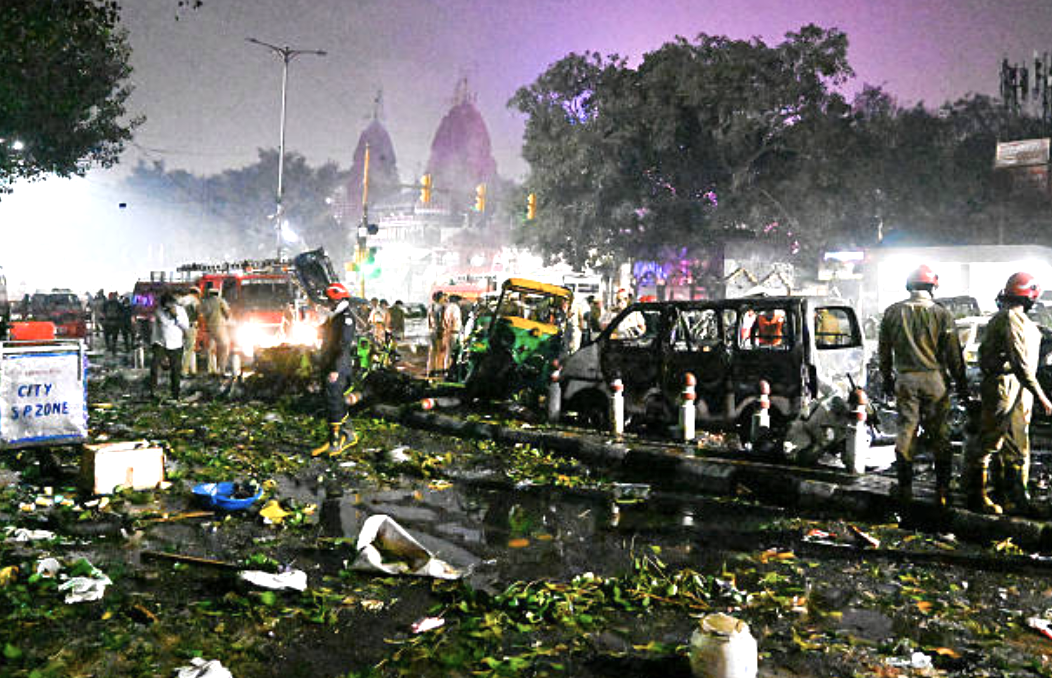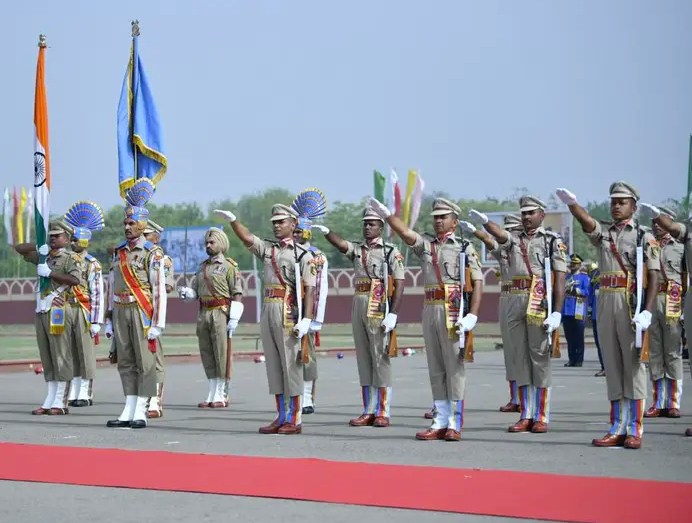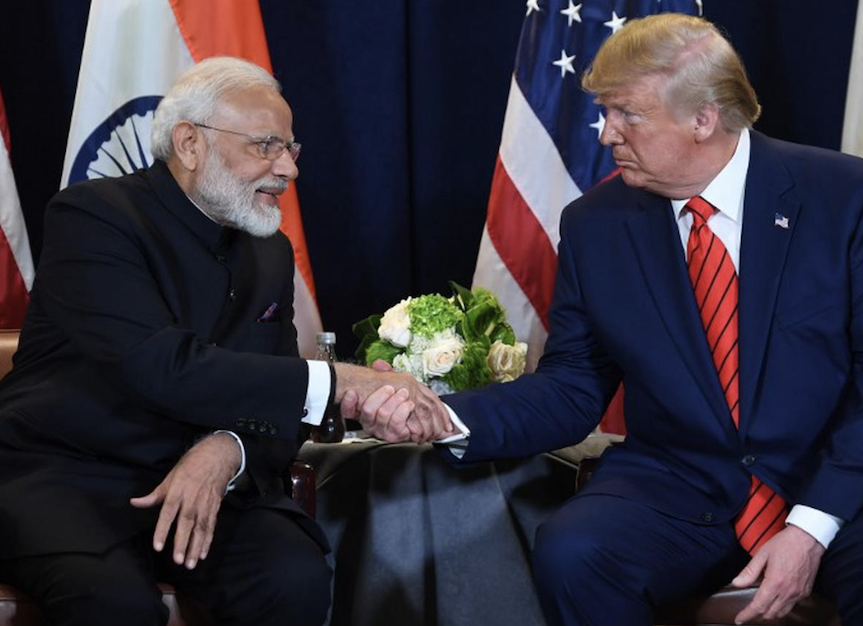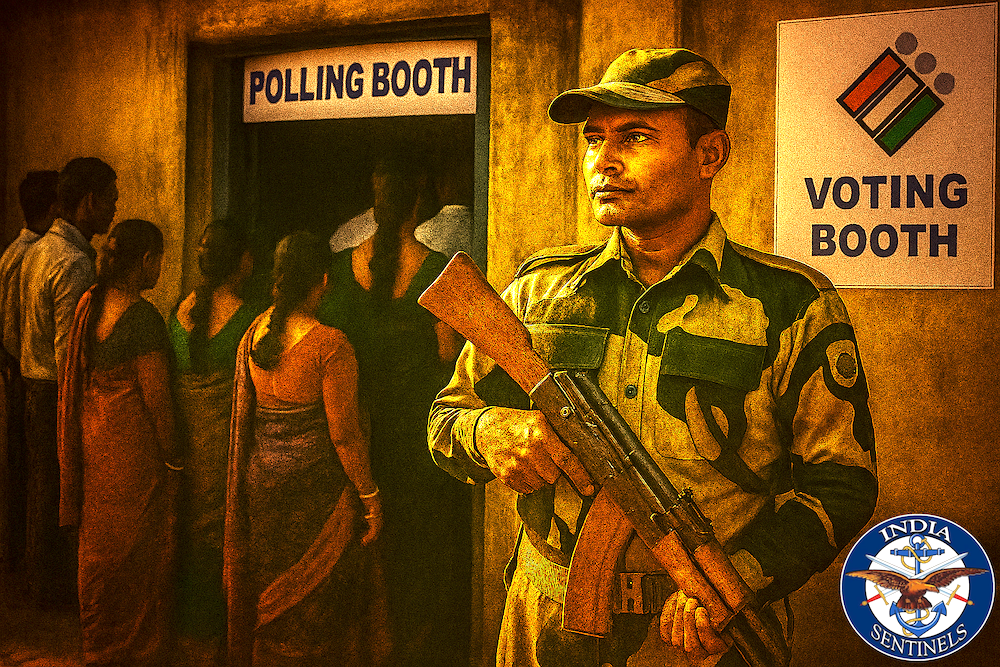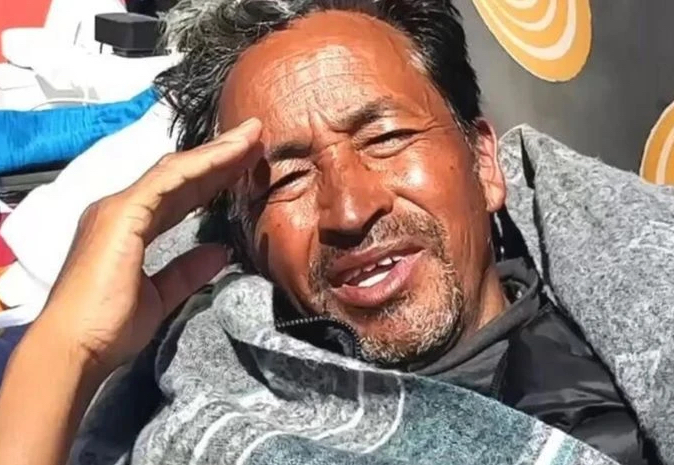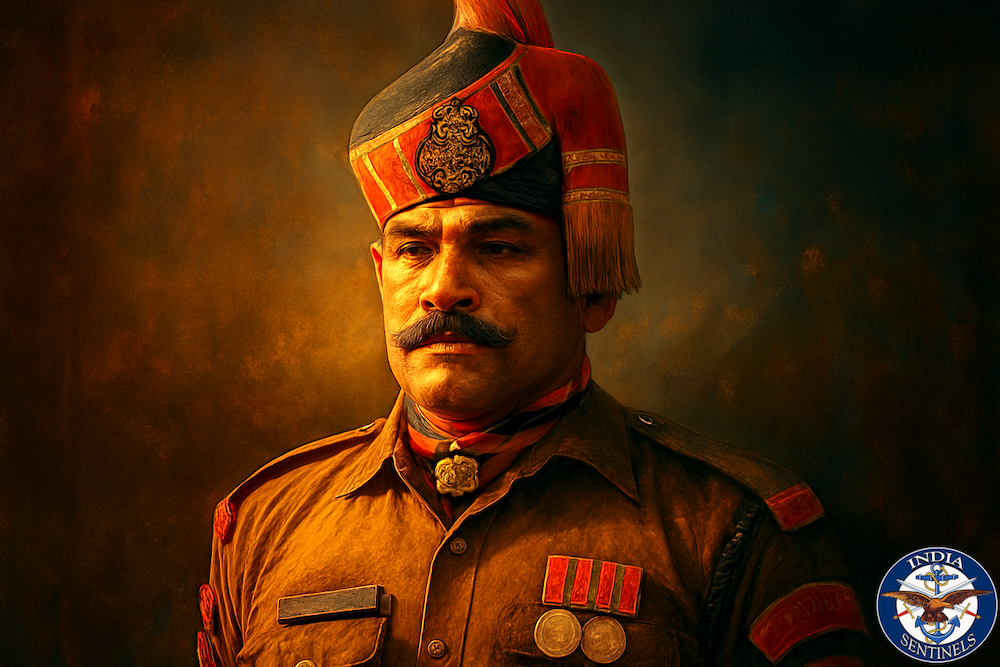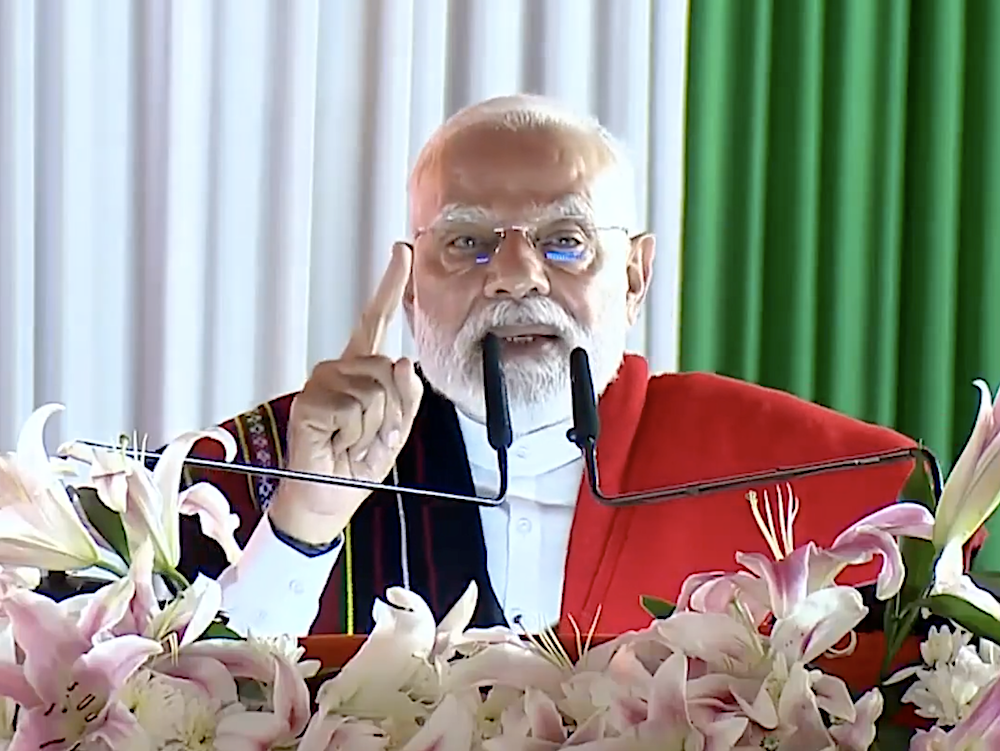 Lt Gen Sagat Singh.
Lt Gen Sagat Singh.
Today, on July 14, India is commemorating the birth anniversary of one of its most formidable military leaders: Lieutenant General Sagat Singh Rathore, PVSM. A man of unyielding resolve, exceptional operational genius, and quiet dignity, Lt Gen Sagat’s journey from the dusty village of Kusumdesar in Bikaner to the annals of military history is as awe-inspiring as it is exemplary.
Born in 1919 into a proud Rajput martial lineage, Sagat Singh inherited not just the traditions of valour but also a deep understanding of duty and service. His father, Brijlal Singh, served in World War I with the Bikaner Camel Corps. The young Sagat enlisted in the Bikaner Ganga Risala in 1938 and, through hard-earned promotions and sheer competence, became one of the few state force officers commissioned as Second Lieutenant during World War II.
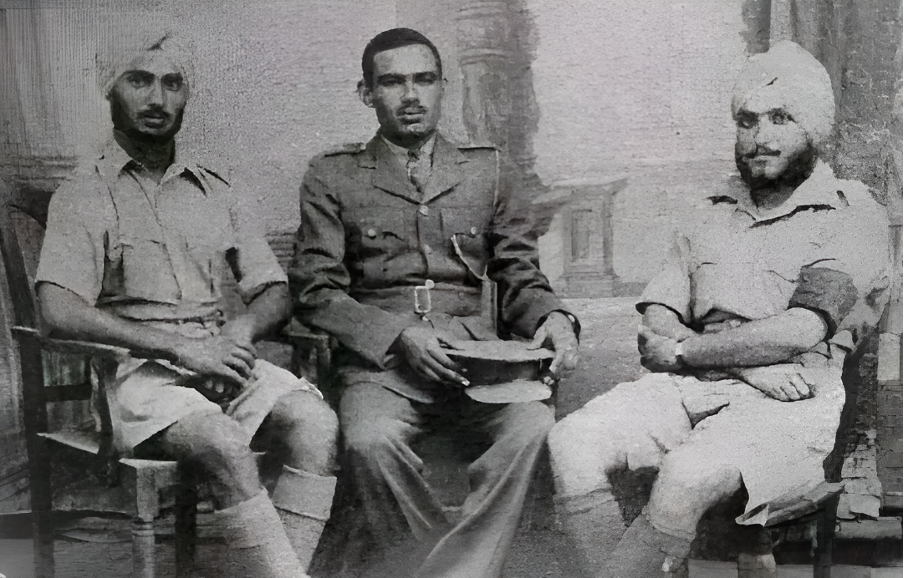 Sagat Singh (C) at Persia (Iran) as part of Bikaner State Forces.
Sagat Singh (C) at Persia (Iran) as part of Bikaner State Forces.
His early years saw action in Iraq, Iran, and the Middle East, experiences that later proved invaluable in his engagements against foreign-backed insurgencies. His keen understanding of logistics and troop management stood out when he was chosen as the only State Forces officer to attend the prestigious Middle East Staff College at Haifa. Following India’s independence, he was seamlessly integrated into the Indian Army and posted to the 3 Gorkha Rifles, a distinguished regiment whose warrior ethos resonated deeply with his own.
Read also: ‘Open Sangsar’ – The radio message that sealed the fate of East Pakistan
Liberator of Goa
The Goa Liberation of 1961 marked Sagat’s first major breakthrough as a field commander. Appointed Brigadier of the elite 50 Para Brigade despite not being a parachutist, Sagat Singh earned his maroon beret through rigorous training at the age of 42. Under his command, the brigade not only played a pivotal role in the swift capture of Goa but went well beyond its brief.
Facing formidable terrain and limited resources, Sagat’s troops improvised river crossings using rafts and local boats. On 19th December, his brigade became the first to enter Panaji, having been airdropped into the city as part of Operation Vijay. The night before, Indian forces had successfully encircled Portuguese positions, prompting their offer to surrender. The next day, Sagat Singh and his troops were greeted by the people of Goa as liberators.
Such was the impact of his leadership that news of his actions reached all the way to Portugal, compelling the Portuguese government to place a $10,000 bounty on his head. His bold advances during the operation cemented his legacy as the “Liberator of Goa” in history.
Read also: Where Paras Dare – The untold story of Operation Cactus
Battle of Nathu-La
In 1964, Sagat Singh relinquished command of the Para Brigade and was promoted to major general, taking charge of the 17th Mountain Division in northeast India.
In May 1965, under the pretext of recovering livestock that had strayed into Sikkim, China deployed around 5,000 troops near the Nathu-la and Jelep-la (“la” in Tibetan means mountain pass). By September, Chinese forces had amassed near Sikkim’s border, posing a serious threat. Sagat warned his superiors that vacating Nathu La and retreating behind the watershed would allow China to occupy the pass permanently, endangering Gangtok and potentially the Siliguri Corridor, also known as the “Chicken’s Neck”, which is approximately 22 kilometres (13.6 miles) wide.
On September 11, 1967, Chinese troops opened fire. Defying pressure from higher command, Sagat stood firm. Known for decisions that didn’t always sit well with his seniors, his resolve delivered a decisive blow to the PLA and restored the Indian Army’s morale in the aftermath of the 1962 war. Heavy shelling on Chinese bunkers caused significant casualties (about 340 Chinese soldiers were killed and over 450 injured). While Jelep-la was eventually vacated, Nathu-la remained firmly under Indian control, a result directly attributable to Sagat’s strategic foresight.
Read also: The Battle of Phillora – Where 5 Jat proved their steel yet again
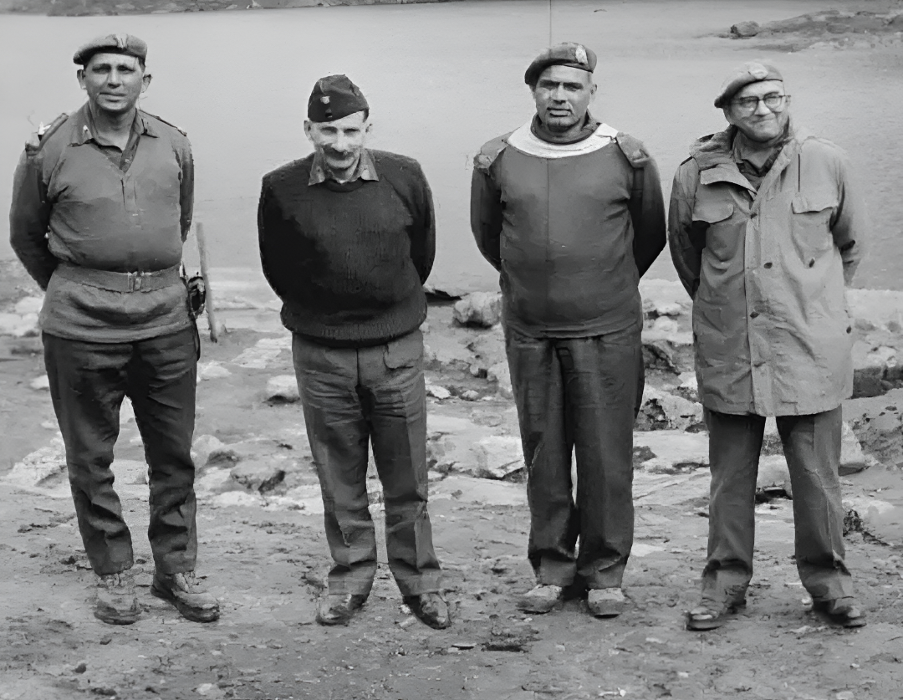 Maj Gen Sagat Singh (2R) with Gen SHFJ Manekshaw (2L) in Nathu-la, in 1967.
Maj Gen Sagat Singh (2R) with Gen SHFJ Manekshaw (2L) in Nathu-la, in 1967.
During his tenure in the northeast, he forged stronger ties with the Indian Air Force and gained a profound understanding of the role of air power and logistics in ground warfare. His growing appreciation for rotary-wing operations would later prove pivotal in a groundbreaking battlefield innovation, a battle that destiny seemed to have reserved for him. Later, for his decisive role in counter-insurgency operations in the Mizo Hills, he was awarded the Param Vishisht Seva Medal in 1970.
The 1971 Meghna Masterstroke
In December 1970, Sagat Singh was promoted to the rank of lieutenant general and posted in Tezpur, Assam. The defining chapter of his military career came in 1971, when he was appointed general officer commanding (GOC) of IV Corps during the India-Pakistan Liberation War of Bangladesh. The terrain of East Pakistan (now Bangladesh) was extremely challenging, with major rivers like the Brahmaputra, Padma, and Meghna posing natural barriers to any military advance.
The Meghna river, one of the widest in the region, stood between Indian forces and the road to Dhaka. The only railway bridge across it was under Pakistani control and had been destroyed to delay Indian advance.
Read also: Will to Fight – The 1962 India-China war operation at Hot Springs
At its narrowest, the Meghna stretched 3.6 kilometres across. With engineering repairs requiring time, Lt Gen Sagat Singh and Maj Gen Bonaventure Francis Gonsalves took the bold decision to airlift Indian troops across the river using helicopters. He used just nine Mi-74 helicopters to complete 60 sorties to airlift 584 troops by December 9, effectively achieving the first-ever heliborne assault in Indian military history while personally coordinating with then Group Captain Chandan Singh.
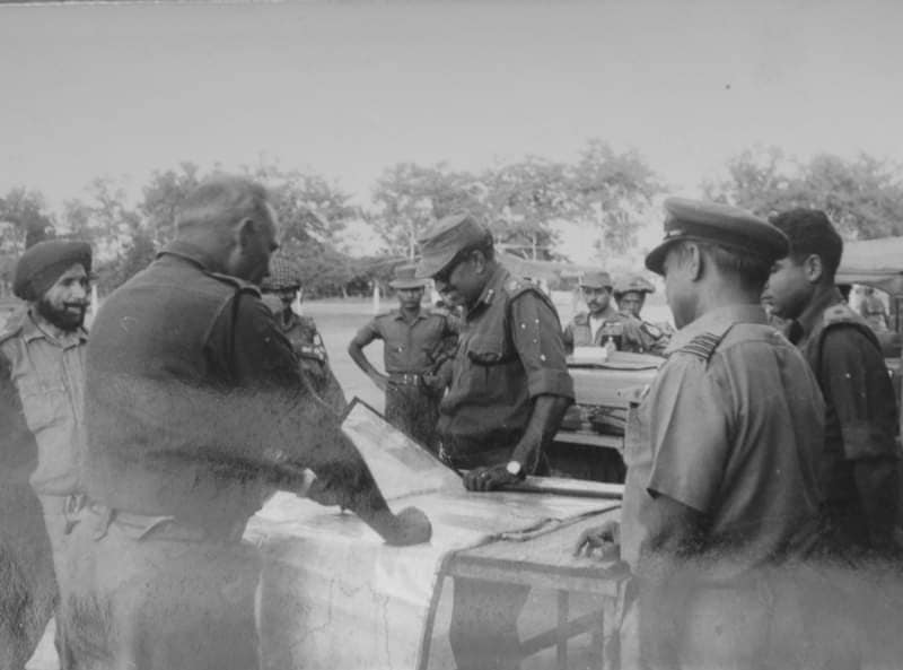 Lt Gen Sagat Singh (2L with hand on map) with Maj Gen Krishna Rao (other officer looking at map) and Gp Capt Chandan Singh (2R) during 1971 War.
Lt Gen Sagat Singh (2L with hand on map) with Maj Gen Krishna Rao (other officer looking at map) and Gp Capt Chandan Singh (2R) during 1971 War.
The Operation Cactus Lilly, better known as the Meghna Heli Bridge or the Crossing of the Meghna operation, was a military masterstroke in its own sense. By circumventing the destroyed bridge, Sagat’s forces used Mi-4 choppers to bypass fortified Pakistani positions and land directly on the road to Dhaka. When Eastern Army commander Lt Gen Jagjit Singh Aurora ordered a halt of operations at the Meghna’s east bank, Sagat’s defiant response became legendary: “Jaggi, over my dead body.”
Recognizing the strategic window, he overruled the directive and pressed on an audacious move that broke the back of Pakistani resistance.
The operation was executed with minimal resources in hostile terrain and under tight timelines, this manoeuvre forced Indian war planners to shift their focus toward capturing Dhaka itself. And the results were historic. By December 16, Pakistan’s Eastern Command surrendered along with 93,000 troops, the largest military capitulation since World War II.
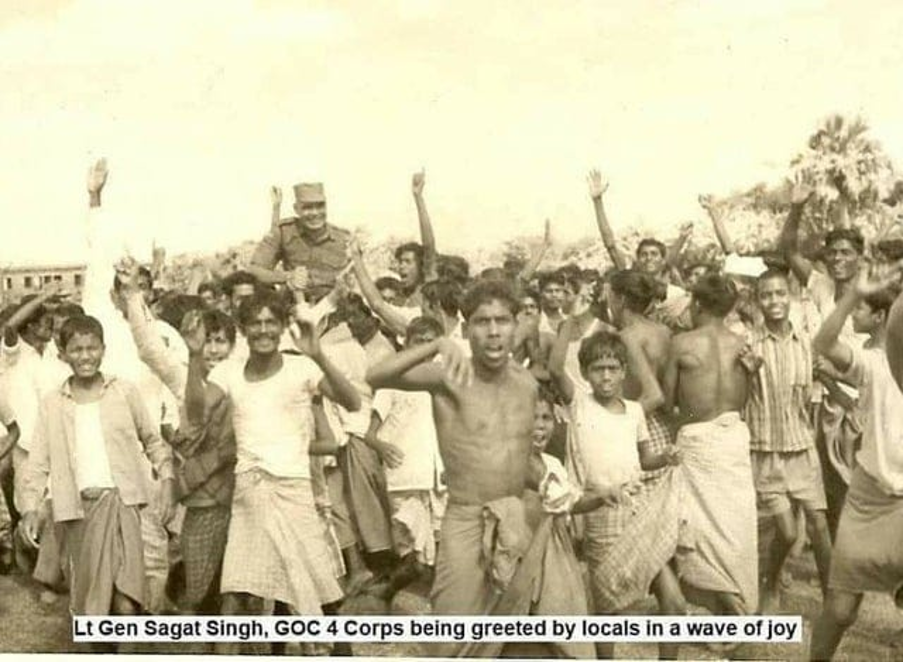 Lt Gen Sagat Singh being greeted by locals in Bangladesh after their country’s liberation.
Lt Gen Sagat Singh being greeted by locals in Bangladesh after their country’s liberation.
Read also: Battle of Galwan – A lost story from the 1962 India-China war
Yet, true to character, Lt Gen Sagat Singh avoided the spotlight. While others stood at the centre of the surrender ceremony, he remained in the background. His legacy is unspoken, but it is forever imprinted on the soil of Dhaka. When comrades like Lt Gen Om Prakash Kaushik calls him “the man who created Bangladesh,” it is no exaggeration.
He was later awarded the Padma Bhushan and Param Vishisht Seva Medal, honours well deserved but arguably insufficient for the scale of his contribution. Overlooked for the top military leadership, he quietly accepted another Corps command and retired with grace. Posthumously, his strategic brilliance has gained greater recognition, with military historians often drawing parallels between his operations and those of General Patton: audacious, fast, and unpredictable.
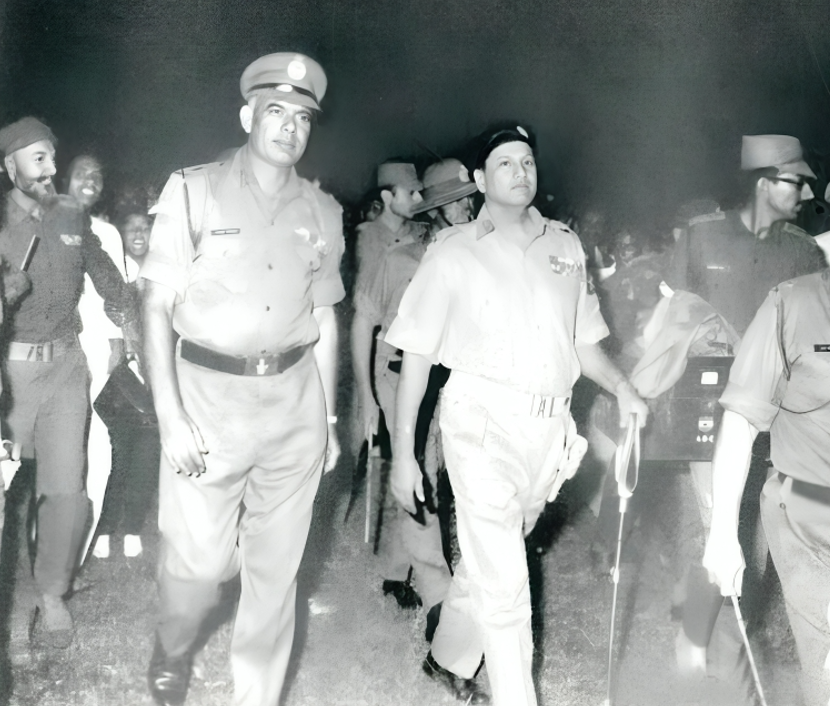 Lt Gen Sagat Singh escorting Lt Gen AAK Niazi of Pakistan, a PoW then, after the surrender ceremony on the evening of December 16, 1971, in Dhaka.
Lt Gen Sagat Singh escorting Lt Gen AAK Niazi of Pakistan, a PoW then, after the surrender ceremony on the evening of December 16, 1971, in Dhaka.
Lt Gen Sagat’s career was marked by a string of operational successes in Goa, Nathu-la, Mizoram, and Bangladesh and not one marred by failure or indecision. He combined a rare blend of tactical innovation, moral courage, and humility. His deep understanding of terrain, his ability to inspire confidence, and his knack for seizing fleeting opportunities make his campaigns essential reading at military institutions today.
As we remember Lt Gen Sagat Singh on his birth anniversary, we celebrate not just a great general but also the timeless virtues he embodied: unflinching resolve, bold leadership, and silent service. His story, long shadowed by institutional oversight, now shines as a testament to clarity of purpose and audacity of execution.
In an age where narratives of war often highlight machines and metrics, Sagat Singh reminds us that it is human will embodied in a commander’s daring that bends history and not just machines. His legacy belongs not just to a regiment or a war, but to the very spirit of a free and self-assured India.
Disclaimer: The stories of Lt Gen Sagat Singh narrated in this article are solely based on the author’s research. All opinions expressed here are the author’s own.
Follow us on social media for quick updates, new photos, videos, and more.
X: https://twitter.com/indiasentinels
Facebook: https://facebook.com/indiasentinels
Instagram: https://instagram.com/indiasentinels
YouTube: https://youtube.com/indiasentinels
© India Sentinels 2025-26


